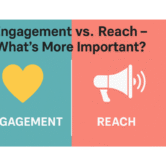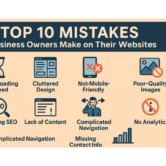
“Color Psychology in Branding – What Your Colors Say About You”
Introduction: The Hidden Language of Colors
Have you ever wondered why Facebook is blue, Coca-Cola is red, or Whole Foods is green? These color choices aren’t random—they’re strategic decisions based on the psychology of color and how it influences consumer perception. In today’s competitive market, understanding color psychology isn’t just helpful—it’s essential for creating a memorable brand identity that resonates with your target audience.
Color is often the first element consumers notice about your brand, and it can impact everything from recognition to purchasing decisions. Research shows that color increases brand recognition by up to 80%, and 85% of consumers cite color as the primary reason they purchase a product.
In this comprehensive guide, we’ll explore how different colors impact consumer psychology and how you can leverage this knowledge to strengthen your brand identity.
The Science Behind Color Psychology
Color psychology is the study of how colors affect human behavior, emotions, and perceptions. Our response to color is both biological and cultural—some reactions are hardwired into our brains, while others are learned through cultural associations.
When we see color, our brain processes it in the visual cortex, triggering a cascade of reactions that influence our mood, appetite, and even heart rate. This neurological response happens within seconds, often before we consciously process the brand or message.
The Emotional Color Wheel
Different colors evoke different emotional responses:
- Red: Excitement, passion, urgency
- Blue: Trust, reliability, tranquility
- Green: Growth, health, peace
- Yellow: Optimism, clarity, warmth
- Purple: Luxury, creativity, wisdom
- Orange: Enthusiasm, friendliness, energy
- Black: Sophistication, authority, elegance
- White: Simplicity, cleanliness, purity
Primary Brand Colors and Their Psychological Impact
Red: The Bold Attention-Grabber
Red is psychologically stimulating, increasing heart rate and creating urgency. It’s associated with passion, excitement, and energy, which is why brands like Coca-Cola, YouTube, and Netflix use it to grab attention and stimulate appetite.
Industries that benefit: Food and beverage, entertainment, clearance sales, emergency services
Example: McDonald’s combines red with yellow to stimulate hunger (red) and create feelings of happiness (yellow)—a powerful combination for a fast-food chain.
Blue: The Trustworthy Professional
Blue is the world’s favorite color and conveys trust, dependability, and professionalism. It has a calming effect and is associated with water, sky, and stability.
Industries that benefit: Finance, technology, healthcare, legal services
“Our digital marketing solutions use these colors strategically to drive urgency and conversions.”
Example: Facebook, Twitter, LinkedIn, and PayPal all use blue to establish trust and reliability—crucial for platforms handling personal information or financial transactions.
Green: The Natural Growth Symbol
Green represents growth, health, and environmental consciousness. It’s calming and associated with nature, prosperity, and renewal.
Industries that benefit: Environmental, organic products, financial services, education
Example: Whole Foods Market uses green to underscore its commitment to natural, organic products, while Starbucks uses it to create a sense of relaxation and connection to coffee’s agricultural origins.
Yellow: The Optimistic Attention-Getter
Yellow captures attention with its brightness and conveys optimism, clarity, and warmth. It stimulates mental activity and generates energy.
Industries that benefit: Food, children’s products, affordable brands, leisure
Example: Best Buy uses yellow for price tags and sale signage because it catches the eye, while IKEA combines yellow and blue to balance affordability with reliability.
Purple: The Creative Luxury Signal
Purple historically symbolizes royalty and luxury. Today, it conveys creativity, wisdom, and quality.
Industries that benefit: Beauty, anti-aging products, luxury goods, spiritual services
Example: Cadbury uses purple to distinguish itself from competitors and convey a sense of indulgence, while Hallmark uses it to suggest thoughtfulness and creativity.
Orange: The Energetic Motivator
Orange blends the energy of red with the cheerfulness of yellow, creating feelings of enthusiasm, creativity, and determination. It’s stimulating without being overwhelming.
Industries that benefit: Fitness, entertainment, food, children’s products
Example: Nickelodeon uses orange to appeal to its young audience with energy and fun, while Home Depot uses it to signify affordability and DIY enthusiasm.
Black: The Sophisticated Authority
Black communicates sophistication, authority, and exclusivity. It’s powerful and timeless but needs to be used thoughtfully as it can also suggest heaviness.
Industries that benefit: Luxury goods, fashion, electronics, premium services
Example: Chanel uses black to represent elegance and timelessness, while Nike often uses black to convey performance and strength.
White: The Clean Minimalist
White represents simplicity, cleanliness, and purity. It creates a sense of space and possibility.
Industries that benefit: Healthcare, technology, wedding services, minimalist brands
Example: Apple uses white to highlight its products’ clean design and simplicity, while many healthcare brands use white to convey cleanliness and sterility.
Color Combinations and Brand Personality
While individual colors have specific associations, combinations create nuanced brand personalities:
Complementary Colors (opposite on color wheel)
- Red & Green: Creates visual vibration, good for seasonal promotions
- Blue & Orange: Balances professionalism with friendliness (Firefox)
- Purple & Yellow: Combines luxury with optimism (Lakers, Crown Royal)
Analogous Colors (adjacent on color wheel)
- Blue & Green: Nature-inspired trust (BP, John Deere)
- Red & Orange: Energetic and exciting (Mastercard)
- Yellow & Green: Fresh and accessible (Subway)
Monochromatic Schemes
- Different shades of the same color create sophisticated, cohesive identities (Instagram, LinkedIn)
How to Choose the Right Colors for Your Brand
“Through our web design services, we use calming tones to build trust and professionalism.”
Selecting your brand colors should be strategic, not just aesthetic. Follow these steps:
- Define Your Brand Personality
Are you:
- Serious and trustworthy? Consider blues and navy
- Creative and innovative? Explore purples or bright accent colors
- Eco-friendly and natural? Green and earth tones make sense
- Affordable and cheerful? Yellow and orange might work well
- Research Your Industry
Understand color norms in your industry. You can either:
- Follow conventions: Blue for finance suggests stability
- Break conventions: Standing out can be powerful (Lyft’s pink in the transportation industry)
- Study Your Competition
Map competitors’ color schemes to identify:
- Oversaturated colors in your market
- Opportunities for color differentiation
- Cultural associations in your target markets
- Consider Cultural Differences
Colors have different meanings across cultures:
- White signifies purity in Western cultures but mourning in some Eastern cultures
- Red means luck and prosperity in China but can signify danger in Western contexts
- Purple is associated with royalty in Western cultures but with death in some Latin American countries
- Test With Your Target Audience
Before finalizing:
- Conduct A/B testing with different color schemes
- Gather feedback from your target demographic
- Test across different platforms (mobile, print, web)
Common Color Mistakes to Avoid
Ignoring Accessibility
About 8% of men and 0.5% of women have some form of color vision deficiency. Ensure your color choices:
- Have sufficient contrast for readability
- Don’t rely solely on color to convey important information
- Work in grayscale for colorblind users
Choosing Too Many Colors
Limit your brand palette to 2-3 primary colors and 2-3 accent colors. Too many colors create confusion and dilute brand recognition.
Neglecting Color Psychology Based on Target Demographics
Different demographics respond differently to colors:
- Age: Children prefer bright primary colors; adults often prefer more subdued tones
- Gender: While preferences are changing, studies show women generally respond more to purple, green, and blue, while men often prefer blue, green, and black
- Income level: Luxury brands often use gold, black, and deep purple to signal exclusivity
Rebranding: When to Change Your Colors
Sometimes, evolving your color scheme becomes necessary:
Signs It’s Time for a Color Update
- Your colors don’t translate well digitally
- Your brand personality has evolved
- You’re entering new markets with different cultural associations
- Your colors blend in with competitors
Success Stories: Effective Color Rebrands
- Starbucks: Evolved from brown (coffee-focused) to green (lifestyle and sustainability)
- Apple: Shifted from rainbow colors to sleek monochrome, signaling maturity and sophistication
- Instagram: Updated from a realistic camera icon with various colors to a gradient-based simplified icon for a more modern look
Conclusion: The Strategic Power of Color
Your brand colors are more than just an aesthetic choice—they’re powerful communication tools that speak to consumers on a subconscious level. By understanding color psychology and making strategic choices aligned with your brand values and target audience preferences, you can create a visual identity that resonates deeply and drives brand recognition.
Remember that while there are psychological principles at work, there’s no absolute right or wrong choice. The perfect color palette is one that authentically represents your brand personality, differentiates you from competitors, and creates meaningful connections with your audience.
As you develop or refine your brand identity, give color the strategic consideration it deserves. After all, in the visual language of branding, colors often speak louder than words.
Need help choosing the right brand colors? Work with Help Me Buddy IT today.”













